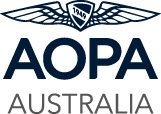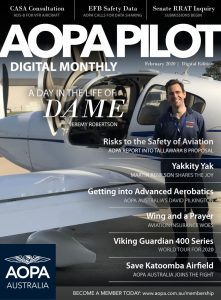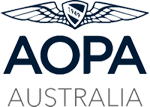ANGEL FLIGHT IS AUSTRALIA’S LARGEST AND LONGEST-SERVING CHARITY FACILITATING COMMUNITY BENEFIT FLYING
Angel Flight has co-ordinated free flights for more than 100,000 disadvantaged rural Australians, whose only other option to attend city hospitals for specialist treatment is ground transport – often taking days each way, at times with the driver/ patients being very elderly or accompanying very young children, on dangerous outback roads. These people cannot afford commercial air travel, which is more often than not, unavailable from their hometowns. Angel Flight recognises, publicly and privately with the affected people, the consequences of tragic fatal accidents, wherever and in whatever circumstances they occur, and is (and has always been) committed to safety and welfare as its priority.
THE ATSB REPORT INTO THE ACCIDENT AT MT GAMBIER ON 20 JUNE 2017
Click to download a copy of the ATSB Final Report
RECOMMENDATIONS
The ATSB offered no safety recommendations to pilots flying light aircraft in bad weather.
The safety recommendation made was for the charity to book people on airlines for travel: this does not adequately factor in cost (particularly where two or more people are travelling, which is often the case); nor does it properly factor in the infrequent scheduling or non-existence of airline flights into country regions across Australia; the inconvenience and difficulties faced by the elderly and families with young children at major city airports, and the associated ground travel; and appears to work on the assumption that city specialists and hospitals will gear their appointment times around airline timetables. Angel Flight does use airline flights where practicable and necessary, and will continue to utilise these services.
The rules implemented by CASA were not directed to the cause of the 2017 accident, or any other accident in the community benefit sector, and the ATSB has not given any support for those rules, save and except for that requiring pilots to write community benefit flights up in their log books, and note that fact on flight plans: the only flow-on from those rules is one of policing data – the very same data has been given by the charity to the ATSB.
It is regrettable, that the Bureau made no relevant safety recommendations, nor gave any guidance whatsoever, to pilots flying in poor weather conditions – the cause of the accident: it would have been of benefit to the flying community had the ATSB focussed on these aspects of the accident.
The safety message raised – induction training and safety management systems, together with a pilot mentoring programme, had already been implemented by the charity prior to the ATSB report and recommendations. Angel Flight takes, and has taken, a very serious and proactive approach to improving safety, and will continue to do so. Angel Flight will continue to urge CASA to improve its Human Factors training in the pre-licencing stage of training, in addition to the refresher courses now offered.
THE DATA
The charity engaged two senior expert statisticians and an analyst, all of whom concluded that the accident rate was not significantly different from the rate for other private flying across Australia. The ATSB also chose to compare only the passenger-carrying sectors of flights coordinated by the charity –it disregarded the flights, also coordinated by the charity, where the aircraft flew from home base to the city collection points, the return trips back to base, and the positioning flights to collect passengers from their own home towns: it did, however, include those flights when reporting ‘occurrences’ against the charity flights. There was, and is, no reason for this failure. To remove up to two-thirds of the coordinated flights in order to make statistical conclusions is unjustifiable. Moreover, when comparing the data with private flights generally, it did not exclude the non-passenger flights for that group – all flights were counted in the general private sector, but not in the charity sector.
Angel Flight has coordinated more than 46,000 flights for the purpose of travelling to, returning from and carrying rural Australians to the city for non-emergency medical appointments. The ATSB has excluded more than half of these flights when assessing accident rates, with the result being to substantially increase the alleged statistical accident rates.
THE EXACERBATION OF THE DATA ERRORS
The ATSB has not adopted its own protocols (and those followed in the US) of counting flight hours for general aviation accidents – instead it counted only flight numbers. An example of that methodology, further invalidating the findings, is (a common route), where the pilot departs home base in Tyabb, flies to Essendon to collect passengers, flies from Essendon to Hay, then returns to Tyabb (three sectors) – this is counted as one flight by the ATSB for its statistical purposes. The flight time for this route in a Cessna 182 would be at least 3.5 hours yet the ATSB gives it is given the same status as a 6-minute touch-and-go circuit at Essendon. To disregard both the actual flight numbers, and the flight hours, compounds the errors (and unreliability) of the findings to an extraordinary degree.
OCCURRENCES
The ATSB also looked at ‘Occurrences’ in controlled airspace (in comparison with private flights generally, most of which occur in uncontrolled space, and therefore are not reported). The ATSB acknowledged that they have no data from flights OCTA, so they did not take that fact into account. The investigators also included in the occurrence data (adverse to the charity), instances where the admitted and conclusive report findings included ATC errors; errors of other aircraft causing safety breaches (not the fault of the charity flight); the proper reporting by the charity-organised flights where others had caused danger (including, for example, a pilot reporting a model aircraft illegally on a flight path, causing the authorised charity aircraft to take evasive action: this was included as a ‘negative’ occurrence against the charity; and diversions to other airports in the interests of safety.
This cannot be regarded as valid in the collection of statistical data, and nor was it found to be so by the experts.
OTHER FINDINGS
The ATSB, amongst its findings, noted that Angel Flight was planning a mentoring program: this is incorrect, and known to the ATSB – the charity implemented its pilot mentoring programme more than a year ago. It was required to stop because CASA introduced rules which imposed restrictions on who could accompany a pilot, as was made very clear by the written advice of a senior CASA executive that “another pilot can accompany a pilot on a CSF as operating crew, so long as the other pilot qualifies to be a co-pilot of the aircraft and has such duties in relation to the CSF”: this clearly precludes pilots from being on board for mentoring, familiarisation, and observation of Angel Flight’s processes and safety culture.
FUTHER OVERLOOKED FACTS
It has not been acknowledged that all volunteers operating their own (CASA-approved and maintained) aircraft for the purpose of these community benefit flights, are CASA-licensed, CASA-trained, and CASA-tested on a one or two-yearly basis. Angel Flight has ensured that the volunteer pilot qualifications are not less than as permitted by the Civil Aviation Safety Regulations, and for the entire period leading to the investigation (14 years), these pilots have had substantially more than the required experience for passenger-carrying private flights in Australia. The new Rules decreed by CASA would have had no bearing on the accident under investigation, and this has been acknowledged by CASA. The pilot under investigation had greater experience than that required by either the former or the current Rules.
Angel Flight has been urging CASA for a substantial time, to re-visit and strengthen the training of its pilots in the human factors area prior to issuing licences. With the additional safety, risk-management and induction training that Angel Flight has already implemented, the addition of CASA training would be beneficial for all pilots in this and other general aviation environments.
This message has been authorised by Angel Flight Australia.
[adrotate banner=”3″]






